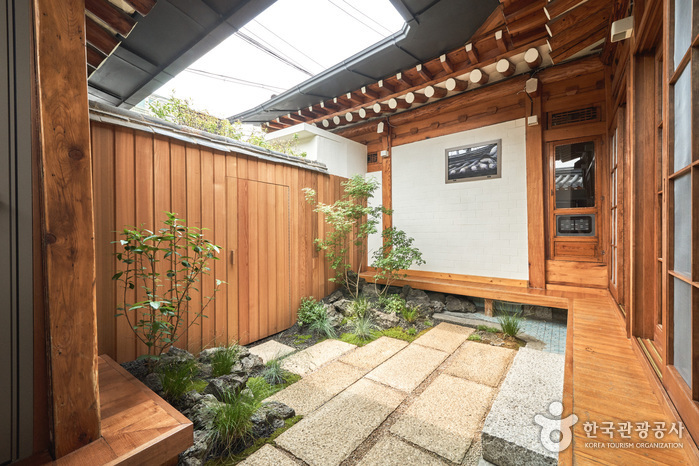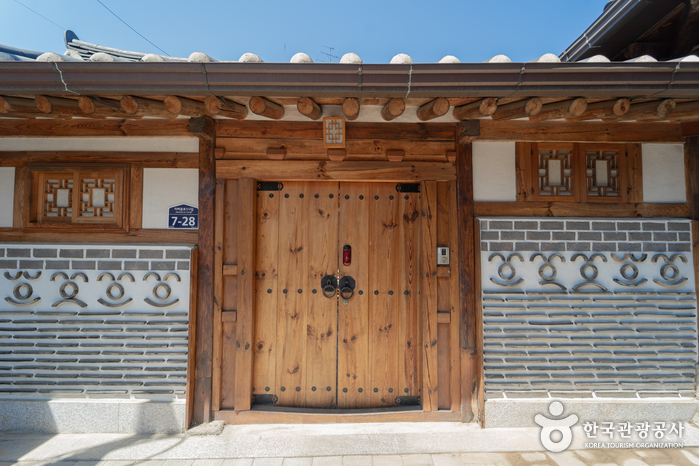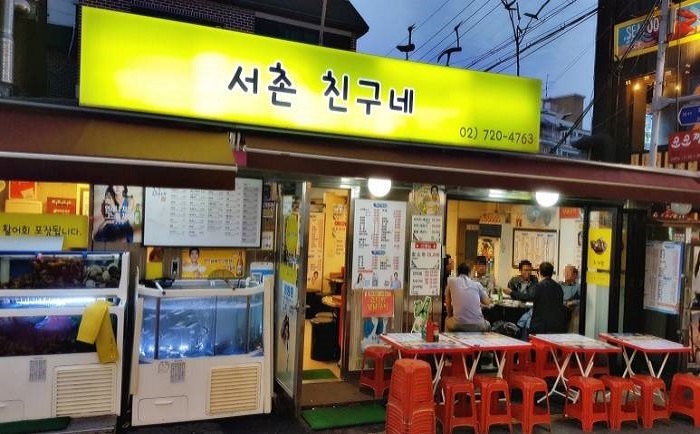Tosokchon Samgyetang (토속촌삼계탕)
10.4Km 2024-03-12
5 Jahamun-ro 5-gil, Jongno-gu, Seoul
+82-2-737-7444
Tosokchon Samgyetang is a restaurant specializing in samgyetang (ginseng chicken soup) near Gyeongbokgung Palace. It is housed in several renovated traditional hanok buildings, exuding a nostalgic atmosphere. Samgyetang is a traditional Korean nutritious food made by simmering cleaned young chicken with ginseng, jujube, sweet rice batter, and various nuts. The thick broth of samgyetang, served alongside ginseng liquor, stimulates the appetite. Diced radish kimchi and cabbage kimchi are served as basic side dishes.
Won Gopchang (원곱창)
10.4Km 2021-03-20
105, Sajik-ro, Jongno-gu, Seoul
+82-2-722-2934
A place that sells grilled intestines loved by Koreans. The best menu at this restaurant is grilled beef reed tripe/grilled pork intestine. This Korean dishes restaurant is located in Jongno-gu, Seoul.
STAY dayoff (스테이 데이 오프)
10.4Km 2024-12-23
6 , Jahamun-ro 1da-gil, Jongno-gu, Seoul
+82-504-0904-2406
Stay Day Off is a hanok stay just off Jahamun-no - known locally as ‘Food Street’ - in Seochon Village to the west of Gyeongbokgung Palace in Seoul. It’s a 5-minute walk from Gyeongbokgung Station on Subway Line 3, so transport access is good. The main building comprises two bedrooms with queen-size bed, a living room and kitchen, and two bathrooms. The annex building is rather special: it has a bath and sauna behind a window wall with a fine view of the hanok garden. There’s a 10% discount for guests staying more than two nights during the week.
Seoul Hanok Stay (JNP Stay) (서울한옥스테이(jnpstay))
10.4Km 2024-10-30
7-28 , Jahamun-ro 1na-gil, Jongno-gu, Seoul
+82-10-5720-6800
Seoul Hanok Stay (JNP Stay) is a private hanok stay located 3 minutes' walking distance from Gyeongbokgung Station. You can play traditional Korean games such as jejichagi (hacky sack), yut nori (board game), and tuho (arrow-throwing) in the yard, and cooking barbecue adds to the charm of the hanok. From the yard, you can enjoy the sky view, feel the gentle breeze, and observe raindrops falling from the eaves.
Seochon Chingune (서촌친구네)
10.4Km 2021-03-18
32, Jahamun-ro 1-gil, Jongno-gu, Seoul
+82-2-720-4763
A Seafood specialty restaurant located in Jongno-gu, Seoul. A restaurant serving a variety of seafood dishes. The most famous menu is steamed clams.
Hyeopjin Computer [Tax Refund Shop] (협진컴퓨터)
10.4Km 2024-04-23
3F, 74, Cheongpa-ro, Yongsan-gu, Seoul
-





![HB Coms [Tax Refund Shop] (에이치비컴즈)](http://tong.visitkorea.or.kr/cms/resource/94/2891194_image2_1.jpg)
![Sjkcnc [Tax Refund Shop] (에스제이케이씨엔씨)](http://tong.visitkorea.or.kr/cms/resource/96/2891196_image2_1.jpg)
![Hyeopjin Computer [Tax Refund Shop] (협진컴퓨터)](http://tong.visitkorea.or.kr/cms/resource/04/2891204_image2_1.jpg)
![Old and New [Tax Refund Shop] (올드앤뉴)](http://tong.visitkorea.or.kr/cms/resource/10/2891210_image2_1.jpg)
![Banwol Audio [Tax Refund Shop] (반월음향)](http://tong.visitkorea.or.kr/cms/resource/18/2891218_image2_1.jpg)
 English
English
 한국어
한국어 日本語
日本語 中文(简体)
中文(简体) Deutsch
Deutsch Français
Français Español
Español Русский
Русский